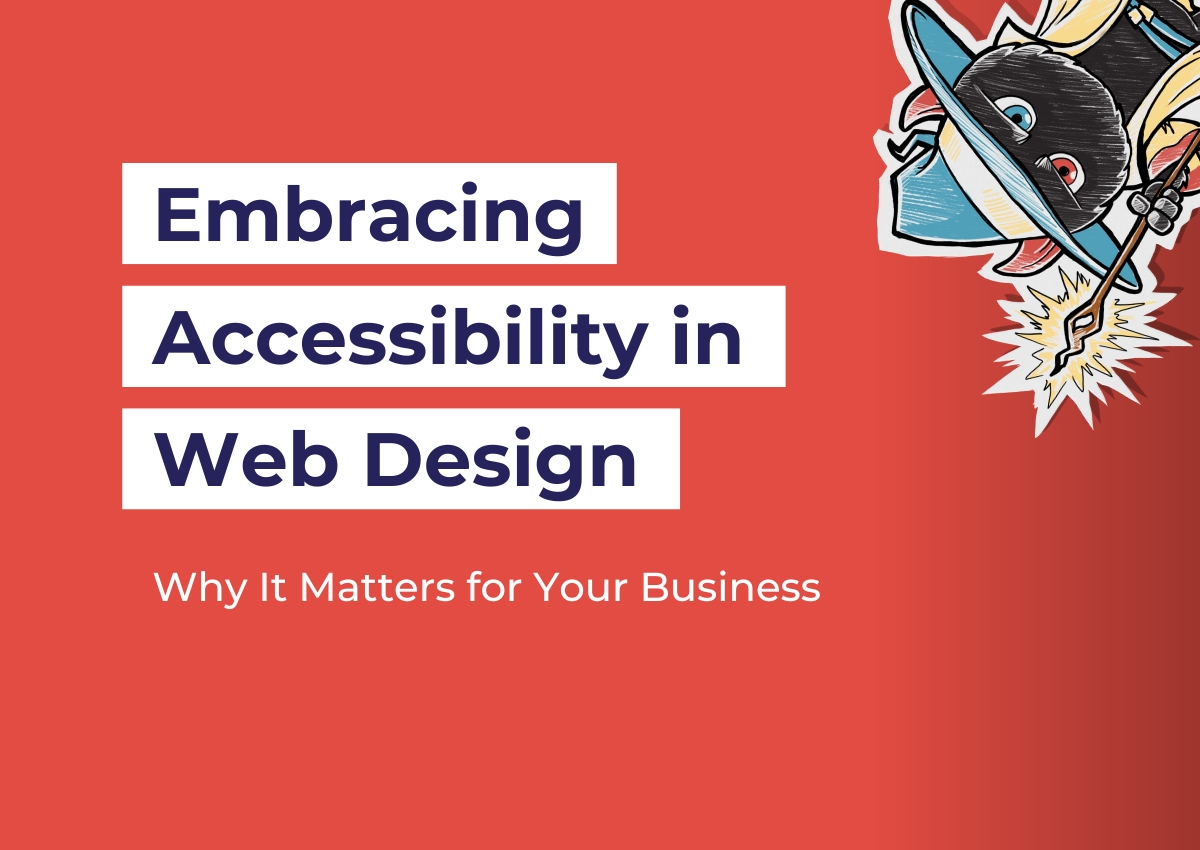Embracing Accessibility in Web Design: Why It Matters for Your Business
 https://www.omahamediagroup.com/images/uploads/monster_gallery/Omaha-Media-Group-Black.jpg
https://www.omahamediagroup.com/images/uploads/monster_gallery/Omaha-Media-Group-Black.jpg

Ensuring your website is accessible to all users is not just a best practice; it's a necessity. For businesses, making your website accessible means opening your doors to a wider audience, improving brand perception and enhancing overall user engagement.
As a Denver web design company, we understand the critical importance of accessibility in web design and development and are here to guide you through making your website universally accessible.
Why accessibility in web design is important
Accessibility in web design ensures that everyone, including people with disabilities, can easily navigate, understand and interact with your website. Approximately 15% of the world's population lives with some form of disability. Neglecting this significant portion of potential users can mean not only a loss of traffic but also potential legal repercussions, as web accessibility compliance is increasingly becoming a legal requirement.
Furthermore, accessible websites tend to have better SEO, as the features that make a site accessible also improve its search engine rankings. Features like alt text for images, proper header use, and accessible navigation help search engines understand and index your website content more effectively.
Key strategies for enhancing accessibility
Use semantic HTML
Proper use of HTML elements like headings, lists and buttons ensures that screen readers can correctly interpret the structure of your content, making it more accessible to visually impaired users.
Ensure sufficient contrast
Text and background colors should have enough contrast so that information is easy to read for those with visual impairments. Tools like the WebAIM Contrast Checker can help you verify if your color combinations meet accessibility standards.
Keyboard navigation
Ensure that all interactive elements are navigable using a keyboard alone. This is crucial for users who cannot use a mouse or touch screen.
Alt text for images
Provide alternative text (alt text) for images. This not only helps visually impaired users understand the images on your site but also serves as a fallback if the image fails to load.
Accessible forms
Label form elements appropriately so that screen readers can effectively communicate the form's information. Ensure error messages are clear and help users correct mistakes.
Responsive and mobile-friendly design
An accessible website must function well on mobile devices, where screen size and touch navigation present unique challenges and opportunities for accessibility.
The impact of accessible web design
Implementing these accessibility practices can significantly impact your business. It can expand your market reach, enhance your company's reputation and demonstrate social responsibility. Moreover, many accessibility adjustments improve the overall user experience for all users, not just those with disabilities. Businesses that prioritize accessibility often see higher customer satisfaction rates and increased loyalty.
Make your website more accessible with the best Denver web design company!
Web accessibility is not just about compliance; it’s about inclusivity. At Denver Media Group, we are committed to creating digital solutions that cater to everyone, ensuring that every user has a positive and productive experience on your site. By prioritizing accessibility, your business not only adheres to best practices, but also champions the rights of all individuals to access information and services online.
Need to make your website accessible? Contact us today, and let's ensure your digital presence welcomes everyone!
Posted In: Website Design, Website Development




















